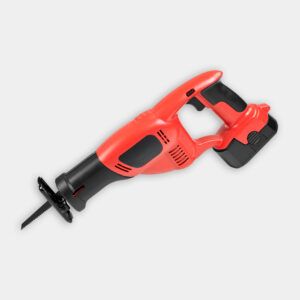We may be compensated if you purchase through links on our website. Our team is committed to delivering honest, objective, and independent reviews on home products and services.
Picture windows are designed to provide unobstructed views and allow ample natural light into a room. While these windows are typically low-maintenance, they may occasionally need replacement due to damage, age, or energy efficiency concerns. In the video above, Ask This Old House general contractor Tom Silva demonstrates the process of replacing a picture window from the inside, offering valuable insights for homeowners facing similar challenges.
Benefits of Replacing a Picture Window
Replacing an old or damaged picture window can offer several advantages, including improved energy efficiency, enhanced home security, and better sound insulation. Additionally, a new window can increase your property value and update the appearance of your home, giving it a fresh, modern look.
When To Replace a Picture Window
Consider replacing your picture window if you notice any of the following issues:
- Visible cracks or chips in the glass
- Condensation between double-pane glass
- Drafts or air leaks around the window frame
- Difficulty cleaning or maintaining the window
- Outdated appearance or style
Preparing for Window Replacement
Before beginning the replacement process, the first thing you’ll need to do is prepare your workspace and gather the necessary tools and materials.
Safety Precautions
When working with glass, safety should be your top priority. Always wear protective gear, including safety glasses, heavy-duty gloves, long-sleeved shirts and pants, and closed-toe shoes.
Tools and Materials
Gather the following tools and materials before starting the project:
- Utility knife
- Reciprocating saw
- Hammer
- Brad nailer
- Vacuum
- Table saw
- Caulking gun
- Spray paint primer
- Wood filler
- Tempered glass replacement window
- Measuring tape
- Window film (optional)
Planning and Measurement
To measure for a replacement window, begin by measuring the height and width of the existing window opening at three different locations to ensure that your new window will fit perfectly. Double-check all measurements before placing your order for the new window.
Step-by-Step Picture Window Replacement Process
In the video above, Silva demonstrates how to replace the window from the inside since the outside wasn’t accessible, but your specific circumstances may be different.
Removing the Old Window
- Carefully remove any broken glass pieces, wearing gloves for protection.
- Break the window muntins to access the remaining glass.
- Score the paint around the window frame and push it forward.
- Use a reciprocating saw if necessary to remove the frame.
Preparing the Window Opening
- Measure the opening and order a custom glass replacement window if needed. In the video, Silva uses safety glass because the window is at the bottom of a stairwell landing.
- Create filler pieces to adjust the jamb dimensions if working from the inside.
- Fabricate rabbeted stops to act as a shelf for the new sash.
- Prime the new rabbeted stops before installation.
- Create a filler piece to level the angled sill, providing a flat surface for the new window.
Ensuring a Proper Fit
Before installing the new window, it’s important to ensure that the opening is square and level. Use a level and measuring tape to check the dimensions of the opening at multiple points. Make any necessary adjustments to the jamb or sill to create a perfect fit for the new window.
Installing the New Window
- Apply a bead of caulk around the window opening to ensure a proper seal.
- Carefully insert the new sash into the prepared opening.
- Secure the window by toe-nailing it into the jamb.
- Caulk around the inside perimeter of the window for added insulation.
Sealing and Insulating
In addition to caulking around the perimeter, consider using weatherstripping to further seal any gaps between the window frame and the opening. This will help prevent drafts and improve the thermal performance of your window.
Finishing Touches
- Consider applying a decorative window film to the inside of the glass for privacy or aesthetic purposes. In the video, Silve uses a decorative window film with a magnolia pattern from Artscape.
- Install any necessary trim or molding around the window.
- Paint or stain the new window frame and trim to match your home’s interior.
Considerations for Safety Glass Picture Windows
When replacing a picture window, it’s important to keep in mind building codes and safety requirements. The difference with safety glass is that it breaks into small, less dangerous pieces if shattered, reducing the risk of serious injury.
The selection of pre-built tempered glass windows is typically limited, so for the project in the video, Silva ordered a custom safety glass replacement from JB Sash & Door, a local window supplier in Massachusetts.
When Safety Glass is Required
Safety glass may be necessary for picture windows in the following situations:
- Near doors or walkways
- Adjacent to staircases or landings
- In bathrooms or other wet areas
- Low to the ground or floor
- Around high-traffic areas
Types of Safety Glass
There are two main types of safety glass used in residential windows:
- Tempered glass: Heat-treated to increase strength and break into small, rounded pieces
- Laminated glass: Two panes of glass with a plastic interlayer that holds the glass together if broken
Consider factors such as location, local building codes, and personal preferences to choose the best safety glass for you. Consult with a professional if you’re unsure about the best choice for your specific situation.
Picture Window Replacement Cost Considerations
The cost of replacing a picture window can vary widely depending on factors such as size, glass type, and installation complexity. While a precise estimate requires a professional assessment, homeowners can expect to pay between $200 and $1,900 for a standard picture window replacement, according to Angi.
Factors Affecting Cost
Several factors can influence the overall cost of your picture window replacement:
- Window size and shape
- Glass type (standard, tempered, or laminated)
- Frame material (vinyl, wood, or aluminum)
- Energy efficiency ratings
- Installation complexity
- Local labor rates
Budgeting for Your Project
When budgeting for your picture window replacement, be sure to account for any additional costs, such as permits, disposal fees for the old window, and potential repairs to the window opening.
Maintenance and Care
Proper maintenance can extend the life of your new picture window and ensure optimal performance.
To keep your picture window looking its best:
- Use a mild, non-abrasive cleaner and soft cloth
- Avoid harsh chemicals or abrasive materials
- Clean the window frame and tracks regularly
- Inspect and clean weatherstripping annually
You should also periodically check your picture window for signs of moisture or condensation between panes, cracks or chips in the glass, gaps or drafts around the frame, and if you have difficulty opening or closing it.







